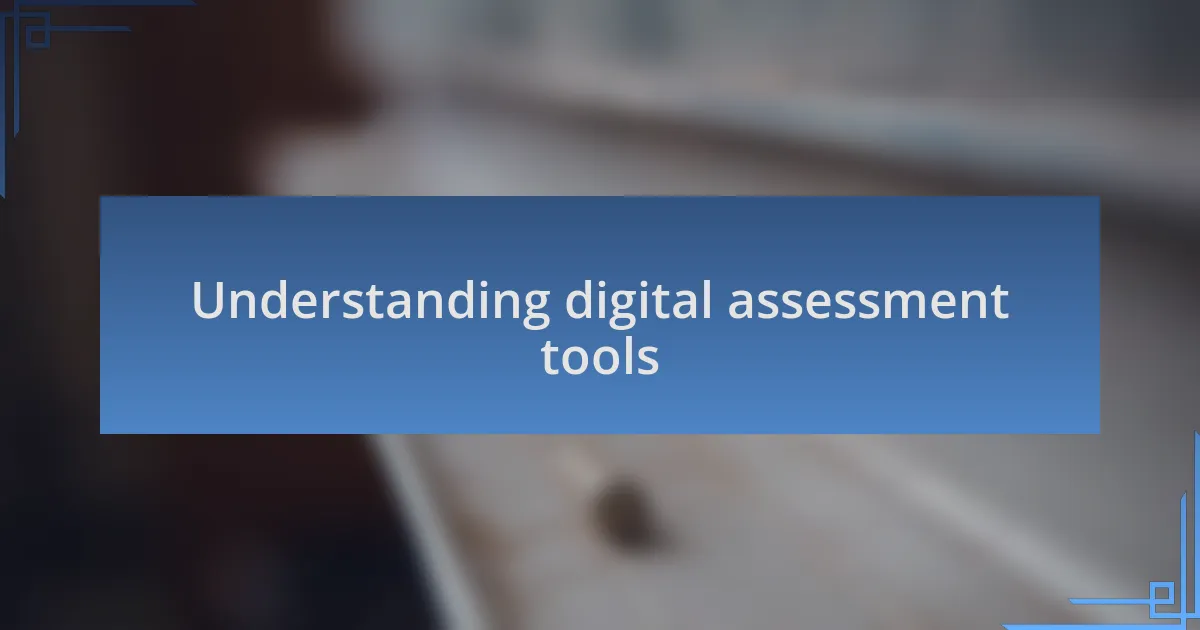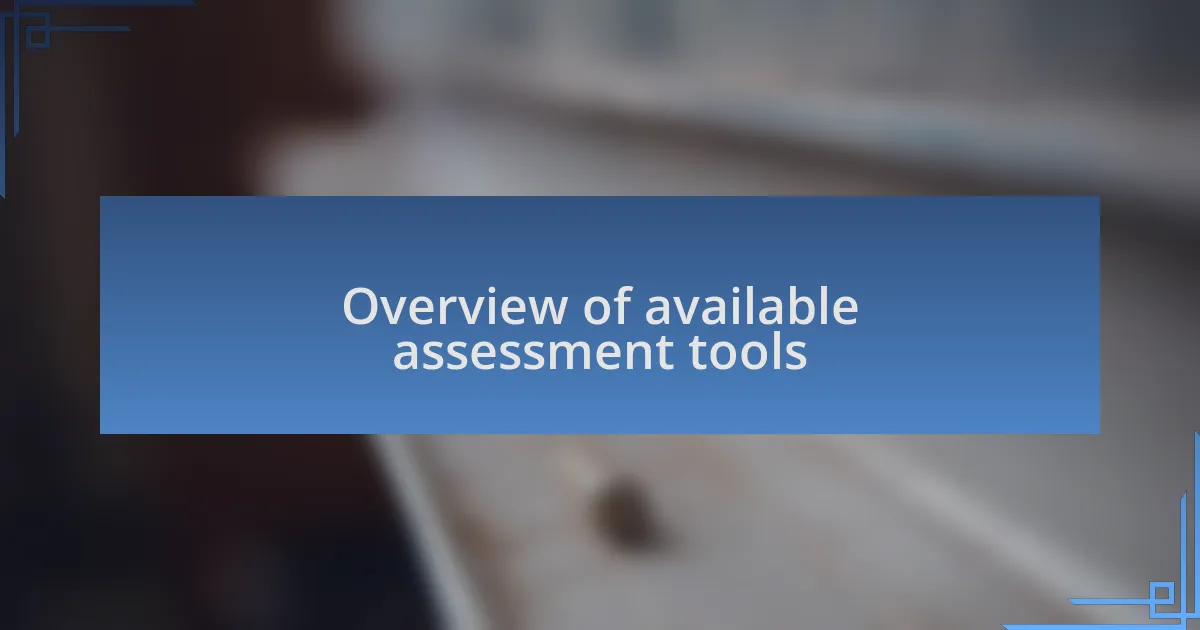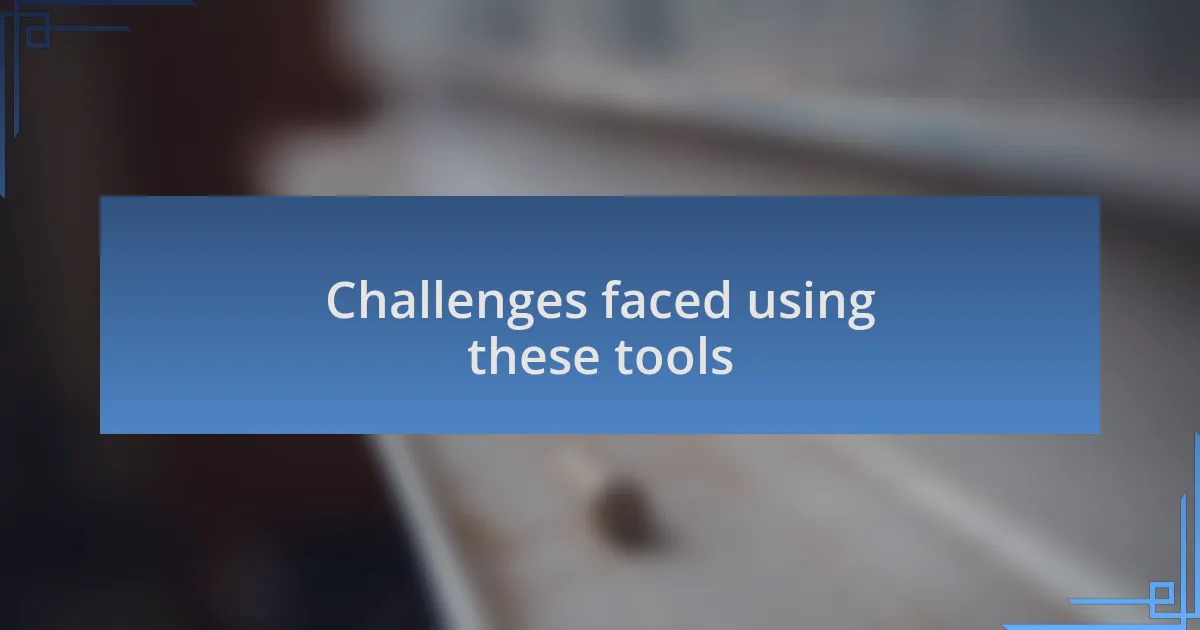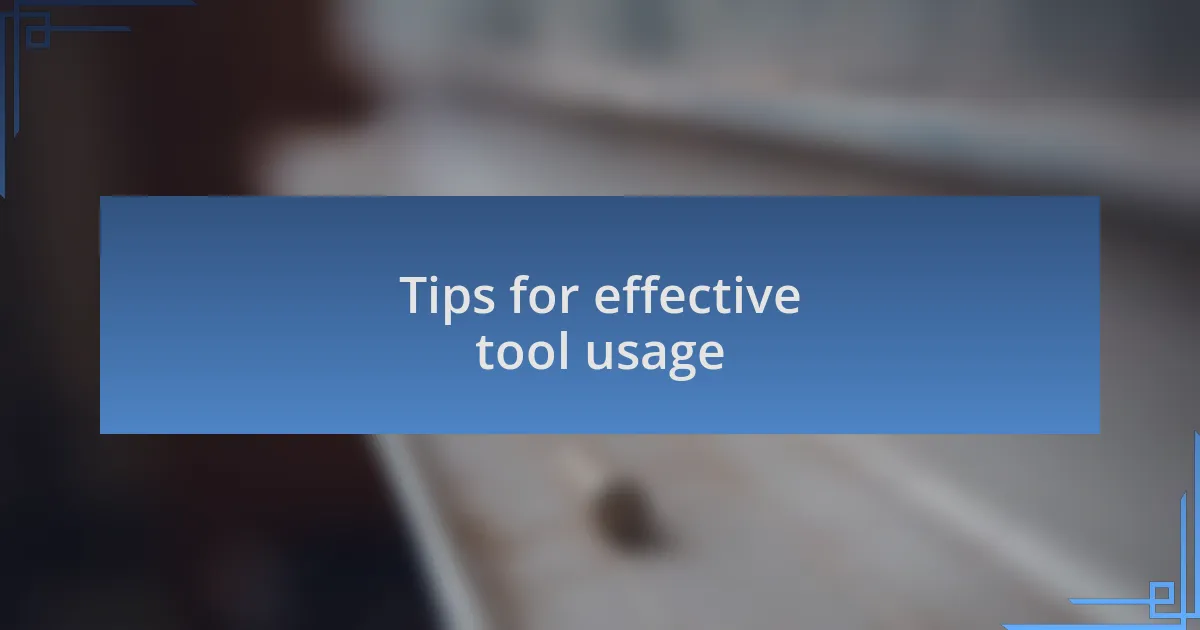Key takeaways:
- Digital assessment tools enhance learning experiences by offering personalized pacing and immediate feedback, transforming traditional evaluation methods.
- Interactive platforms like Quizlet and Kahoot engage students through gamification, while tools like Lexia Core5 and IXL provide tailored support for individual learning needs.
- Challenges include initial learning curves, technical glitches, and potential feelings of isolation, highlighting the need for balance between digital independence and interpersonal interaction.
- Setting clear goals, staying updated on tool features, and prioritizing self-care are essential for maximizing the effectiveness of digital assessment tools.

Understanding digital assessment tools
Digital assessment tools represent a remarkable shift in how we evaluate learning and understanding. I remember the first time I encountered one—it was like stepping into a new world where testing felt less daunting. Who would have thought that technology could transform the dry, often stressful, experience of assessments into something engaging?
As I explore these tools, I notice how they can cater to individual needs. For instance, some platforms allow learners to progress at their own pace, making a significant difference for those who may struggle with traditional timed tests. I often wonder how much more empowered students feel when they have the freedom to learn and assess themselves in a way that suits them best.
What strikes me most is the immediacy of feedback these tools provide. I vividly recall a moment when I used an online assessment and received insights within minutes. It made me think—wouldn’t it be amazing if all assessments could be so responsive? Evaluating progress becomes a dynamic conversation rather than a static experience, opening doors for learners to understand their strengths and weaknesses in real time.

Overview of available assessment tools
When exploring the available digital assessment tools, I find several intriguing options that stand out. For instance, platforms like Quizlet and Kahoot offer interactive assessments that turn learning into a game, capturing the attention of even the most reluctant learners. I still remember the excitement in a classroom when we used Kahoot for the first time; the friendly competition really motivated everyone to engage with the material.
Another noteworthy tool is the Lexia Core5 Reading program, specifically designed to support struggling readers. This adaptive learning technology personalizes lessons based on students’ progress. I often think back to my own experience in those early days of learning to read—how incredibly helpful it would have been to have instant adjustments to my learning path according to my needs.
There are also comprehensive platforms like IXL that provide a vast array of subjects and immediate feedback on answers. I recall working on math problems with IXL and becoming so engrossed in the instant corrections and explanations that I often lost track of time. Isn’t it fascinating how digital assessment tools can transform not only our learning but also our perception of our own capabilities?

Personal experiences with specific tools
Using SnapType as a digital assessment tool made a significant difference in my experience with written assignments. I remember a moment in class where I struggled to keep up with note-taking due to my dyslexia. SnapType allowed me to take pictures of worksheets and type my answers right on the screen, turning what once felt like a daunting task into a manageable one. How empowering it felt to produce clear work without the anxiety of handwriting!
Another tool that I found particularly useful was Read&Write. The text-to-speech feature opened up a whole new world for me. Often, I would listen to the content being read aloud while following along visually. It was amazing to realize how much more I understood when I combined listening with reading. I still cherish those moments of clarity and connection with the material—did I mention how effective it was for retention?
Lastly, I can’t overlook my experience with Google Forms for self-assessment. I created personalized quizzes for myself, reflecting on what I learned after each session. It was an eye-opener to see my progress visually represented. There was a sense of accomplishment in analyzing my growth, wouldn’t you agree? It truly made me feel like an active participant in my learning journey rather than just a passive recipient.

Challenges faced using these tools
Using digital assessment tools definitely comes with its challenges. One hurdle I faced was the initial learning curve. When I first tried SnapType, the interface felt overwhelming. I found myself struggling to navigate the features, which was frustrating. I wondered if I would ever get comfortable with it.
Another difficulty was the occasional technical glitches. I clearly remember a moment during an important assignment when Read&Write suddenly crashed. That added stress made me question my reliance on technology. I thought, is it worth the risk when things can go wrong at the worst possible time? It made me realize that while these tools are incredibly beneficial, they aren’t without their flaws.
Lastly, I sometimes felt isolated while using these tools. Despite all the engagement they promote, nothing can fully replace the interaction of working with peers or teachers. I caught myself longing for those collaborative moments, even while enjoying the independence that digital tools offered. I often ask myself, how much personal connection am I sacrificing for convenience? Balancing both remains a constant challenge.

Tips for effective tool usage
When using digital assessment tools, it’s essential to set specific goals before diving in. I remember a time when I approached an assessment tool without a clear objective, and it felt like I was wandering in a maze. Defining what you want to achieve not only boosts your productivity but also enhances your focus, almost like having a map that guides you through the features.
Another tip is to regularly familiarize yourself with the tool’s updates and new features. I’ll never forget the moment I discovered a shortcut in SnapType that allowed me to streamline my workflow significantly. It’s those little insights that can change your experience entirely, reminding me that staying informed can make a world of difference.
Finally, I emphasize the importance of practicing self-care while using these tools. During intense study sessions, I often found myself forgetting to take breaks. Realizing that a quick stretch or a walk around my room could reset my focus was a game-changer. How can we expect to absorb information effectively if we neglect our well-being? Balancing tool usage with healthy habits ensures that we make the most of what these assessments can offer.